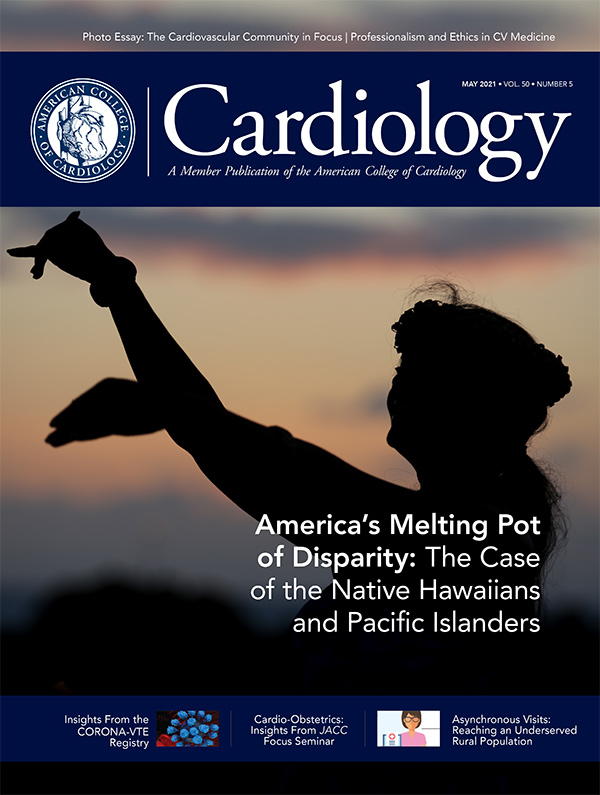Journal Wrap

The hottest research from various peer-reviewed journals – handpicked weekly by the ACC.org Editorial Board led by Kim A. Eagle, MD, MACC.
Community-focused, pharmacist-led hypertension programs in Black-owned barbershops may be a cost-effective strategy to enhance blood pressure control in Black men and significantly reduced cardiovascular risk over 10 years, according to a study published in Circulation.
Kelsey B. Bryant, MD, MPH, et al., conducted an analysis of the Los Angeles Barbershop Blood Pressure Study (LABBPS), and assessed the cardiovascular health outcomes, quality-adjusted life years (QALYs), and direct health care costs over 10 years. The study evaluated Black male participants between 24 and 79 years of age with systolic blood pressure ≥140 mm Hg. To accommodate antihypertensive medication costs and travel expenses, all participants received $25 per visit with the pharmacist.
Pharmacists calculated the blood pressure, fatal and nonfatal cardiovascular disease events, medication-related adverse events, and noncardiovascular disease death in all participants.
Results showed that after 10 years, the LABBPS was a cost-effective method to manage blood pressure and reduce cardiovascular risk in Black men. The average cost per QALY gained was $42,717. If pharmacists opted for generic antihypertensive medications, they could reduce the average cost to $17,162 per QALY gained. Other variables that impacted the intervention's cost-effectiveness included medication needs and pharmacist time.
"Black-owned barbershops may be a particularly effective setting to deliver health promotion, improve hypertension control, and reduce cardiovascular disease disparities," the authors conclude. They add that "exclusive use of generic drugs could further improve the cost-effectiveness ... and the feasibility for widespread implementation in the U.S."
Jae Patton, MSN, CRNP, AACC, comments in an ACC.org Journal Scan article, "It is also important to note that in the LABBPS, educating trusted community partners alone was not enough. Embedding trained cardiovascular professionals in non-traditional settings where Black men may be more comfortable receiving care was what had the biggest impact. Interventions such as the LABBPS that can reduce health inequities may be cost-effective, but improving the cardiovascular health of Black men in the U.S. carries significant non-monetary value for our society as a whole. The LABBPS challenges health care providers and systems to find innovative ways to address the legacy of systemic racism in medicine."
The tireless leadership of Ronald G. Victor, MD, FACC, principal investigator of the original barbershop study, was acknowledged by the study authors in the published article. Just months before his death, he presented the results at ACC.18.
Bryant KB, Moran AE, Kazi DS, et al. Circulation 2021;April 15:[Epub ahead of print].
Advanced coronary imaging using both IVUS and near-infrared spectroscopy (NIRS) was able to identify vulnerable plaque in nonculprit lesions among patients presenting with acute myocardial infarction (MI), according to findings from the PROSPECT II study published in The Lancet.
The investigator-sponsored study conducted in Denmark, Norway and Sweden prospectively followed the natural history of patients of any age at the time of an MI. After treatment of all flow-limiting coronary lesions, three-vessel imaging was done with a combined NIRS and IVUS catheter.
Lesions with both large plaque burden by IVUS and large lipid-rich cores by NIRS had a four-year nonculprit lesion-related MACE rate of 7.0%. Patients with ≥one such lesion had a four-year nonculprit lesion-related MACE rate of 13.2%.
Combined NIRS and IVUS detects angiographically nonobstructive lesions with a high lipid content and large plaque burden that are at increased risk for future adverse cardiac outcomes.
Erlinge D, Maehara A, Ben-Yehuda O, et al. Lancet 2021;397:985-95.
Unlike their male counterparts, women veterans with premature atherosclerotic cardiovascular disease (ASCVD) receive "less optimal" secondary prevention cardiovascular care, according to a study published in JAMA Cardiology. Comprehensive interventions are crucial towards improving this health care disparity in women.
Michelle T. Lee, MD, et al., looked at 147,600 veteran patients enrolled in the Veterans With Premature Atherosclerosis registry and examined sex-based differences in cardiovascular care for patients with premature or extremely premature ASCVD between Oct. 1, 2014, and Sept. 30, 2015. The primary outcome was antiplatelet use, any statin and high-intensity statin therapy, and statin adherence.
Results showed that women veterans represented 7.1% of the patients with premature ASCVD and 14.1% of the patients with extremely premature ASCVD. Women with premature ischemic heart disease had lower statin adherence than men, yet less likely to receive antiplatelet agents, statins and high-intensity statin therapy. Similarly, female participants with premature peripheral arterial disease (PAD) and ischemic cerebrovascular disease received significantly fewer antiplatelet agents, statin therapy and high-intensity statin therapy than male patients. Researchers found no distinctions in statin adherence between female and male patients with premature PAD, premature ischemic cerebrovascular disease, or extremely premature ASCVD.
Although the authors found that women with premature or extremely premature ASCVD received notably fewer antiplatelets, statin therapy or high-intensity statin therapy than men, they also found that both sexes received inadequate statin therapy and maintained poor statin adherence overall.
The authors conclude that moving forward, "A systems-based approach toward improvement of sex-based health care delivery necessitates prompt efforts to narrow sex-based health care delivery gap for women." They add that, "After identifying gaps in current health care, addressing those issues will require implementing system-level interventions to improve guideline-concordant practices among clinicians and medication adherence among patients."
Lee MT, Mahtta D, Ramsey DJ, et al. JAMA Cardiol 2021;April 21:[Epub ahead of print].
Clinical Topics: Cardiovascular Care Team, Congenital Heart Disease and Pediatric Cardiology, Dyslipidemia, Geriatric Cardiology, Noninvasive Imaging, Prevention, Vascular Medicine, Atherosclerotic Disease (CAD/PAD), CHD and Pediatrics and Arrhythmias, CHD and Pediatrics and Imaging, CHD and Pediatrics and Prevention, CHD and Pediatrics and Quality Improvement, Lipid Metabolism, Nonstatins, Novel Agents, Statins, Hypertension
Keywords: ACC Publications, Cardiology Magazine, Young Adult, Adult, Middle Aged, Aged, Hydroxymethylglutaryl-CoA Reductase Inhibitors, Cardiovascular Diseases, Antihypertensive Agents, Cost-Benefit Analysis, Cost-Benefit Analysis, Drugs, Generic, Platelet Aggregation Inhibitors, Quality-Adjusted Life Years, Peripheral Arterial Disease, Peripheral Arterial Disease, Healthcare Disparities, Secondary Prevention, Blood Pressure, Racism, Spectroscopy, Near-Infrared, Veterans, African Americans, Feasibility Studies, Atherosclerosis, Risk Factors, Hypertension, Medication Adherence, Myocardial Infarction, Cerebrovascular Disorders, Cardiology, Medicine, Medicine, Health Promotion, Registries, Catheters, Outcome Assessment, Health Care, Lipids, Health Care Costs
< Back to Listings

